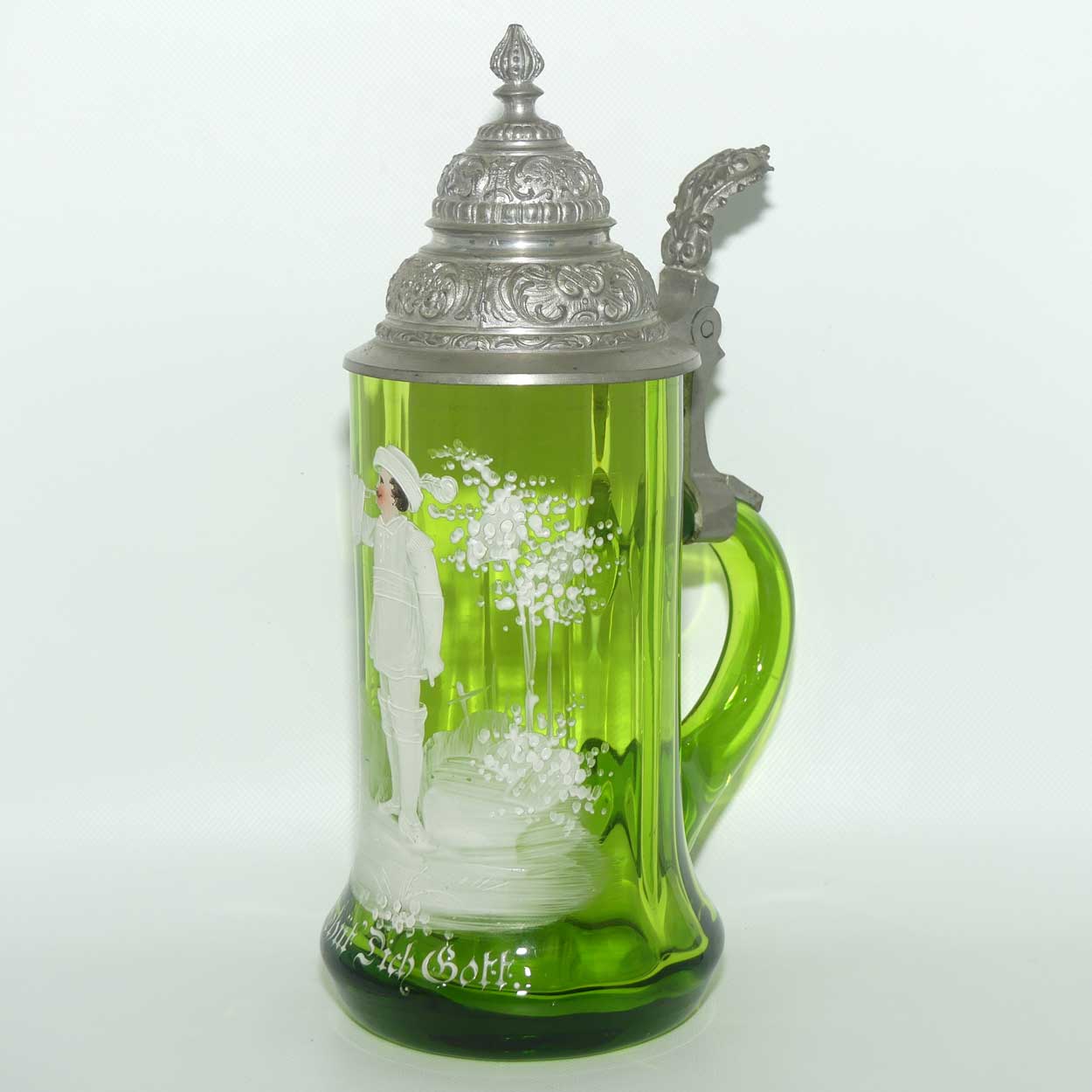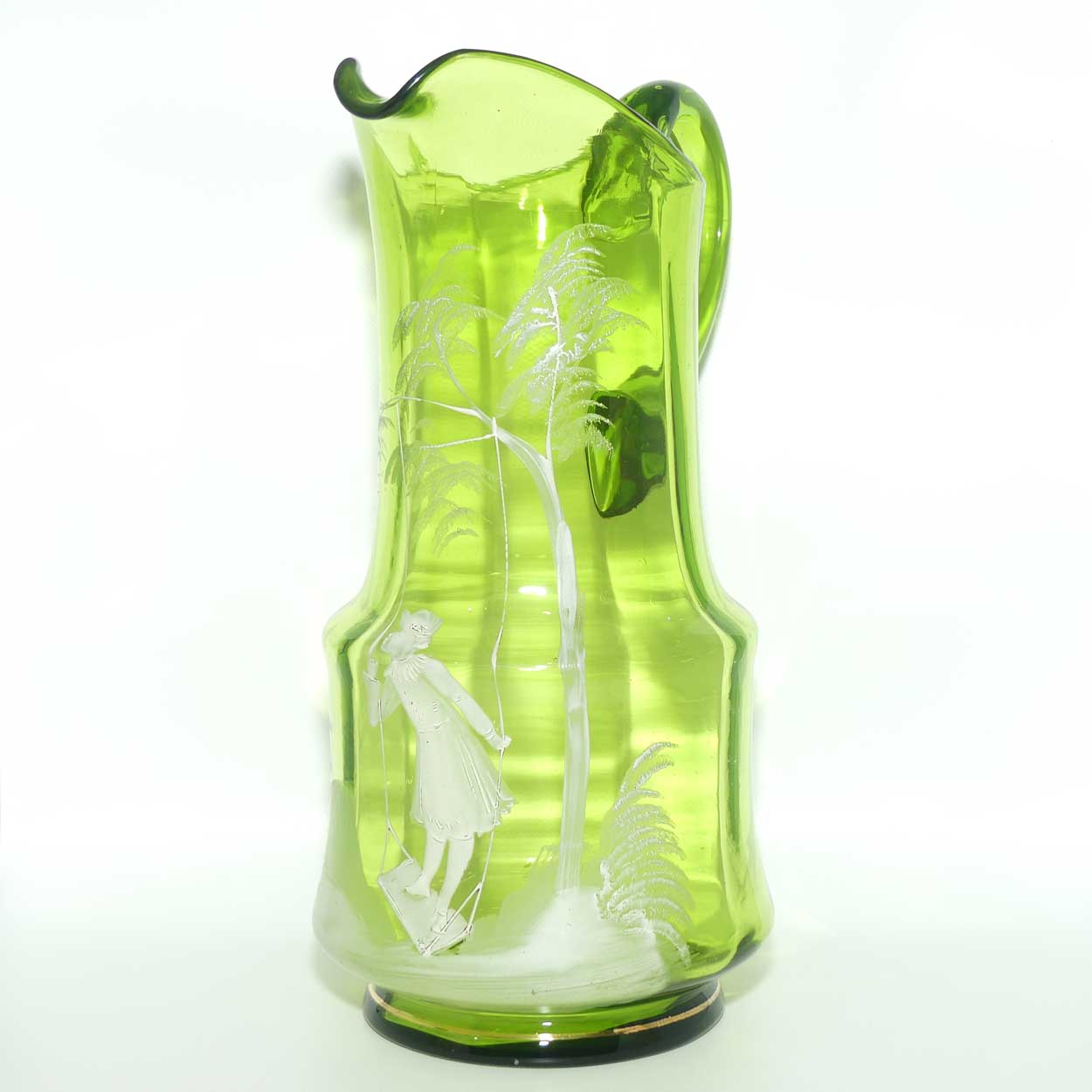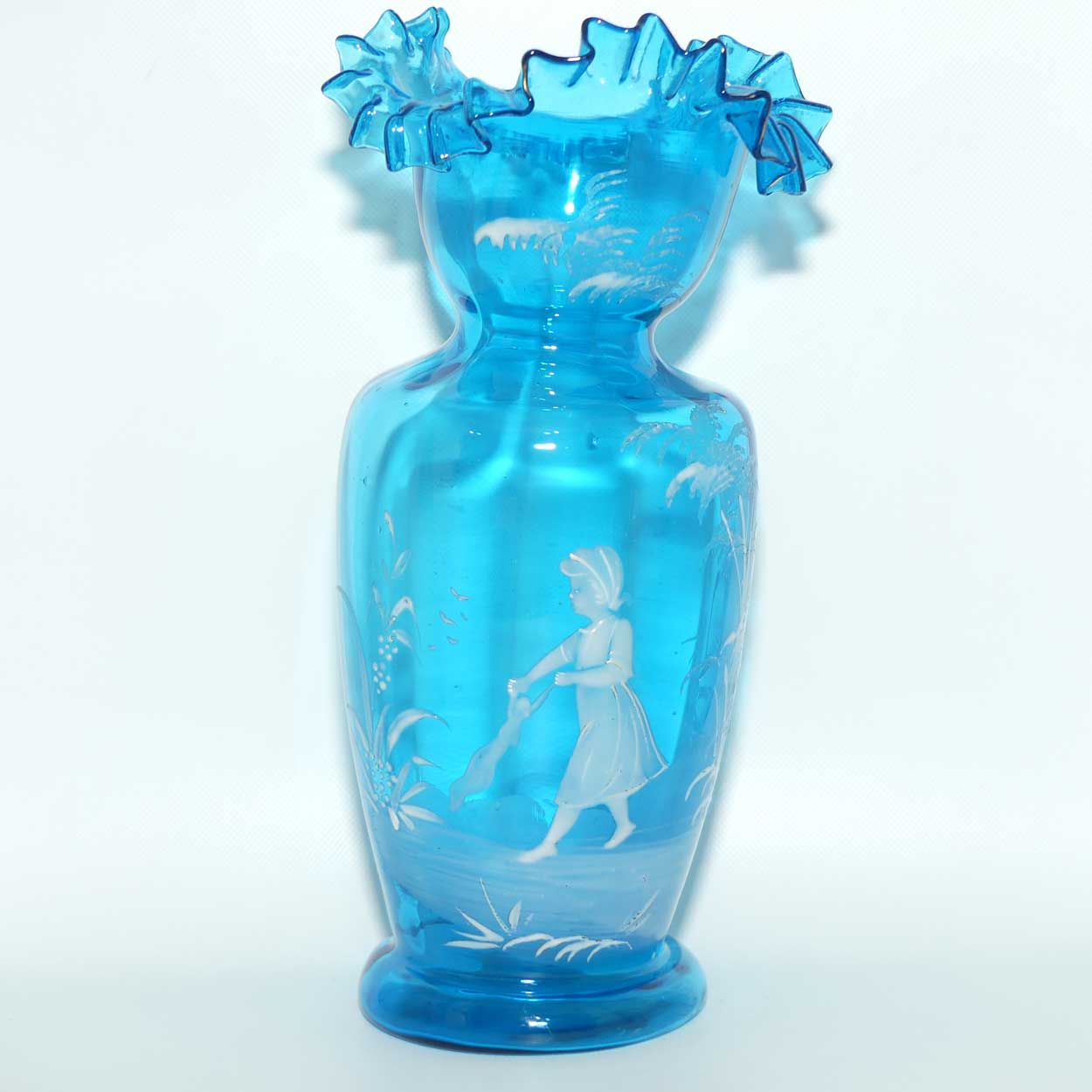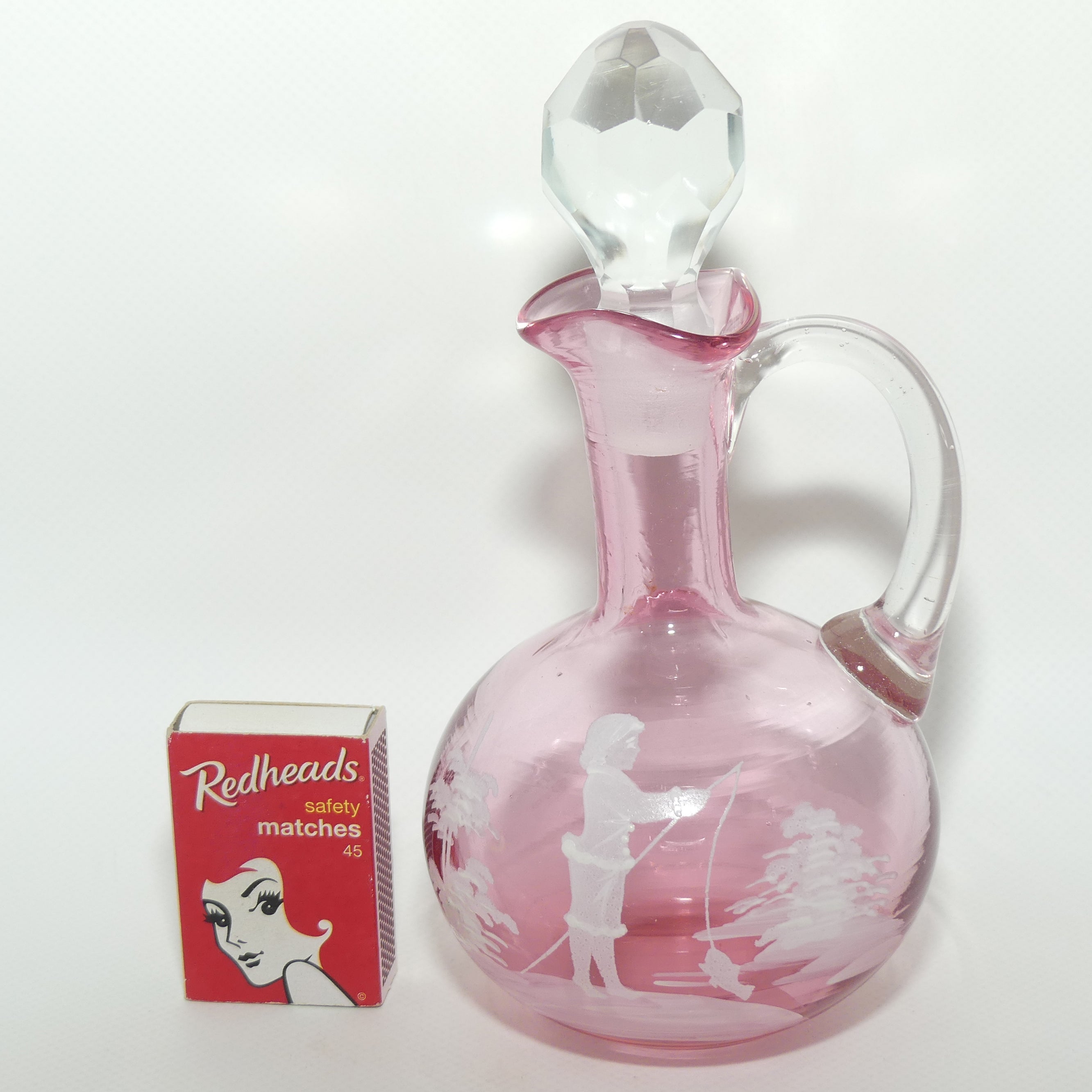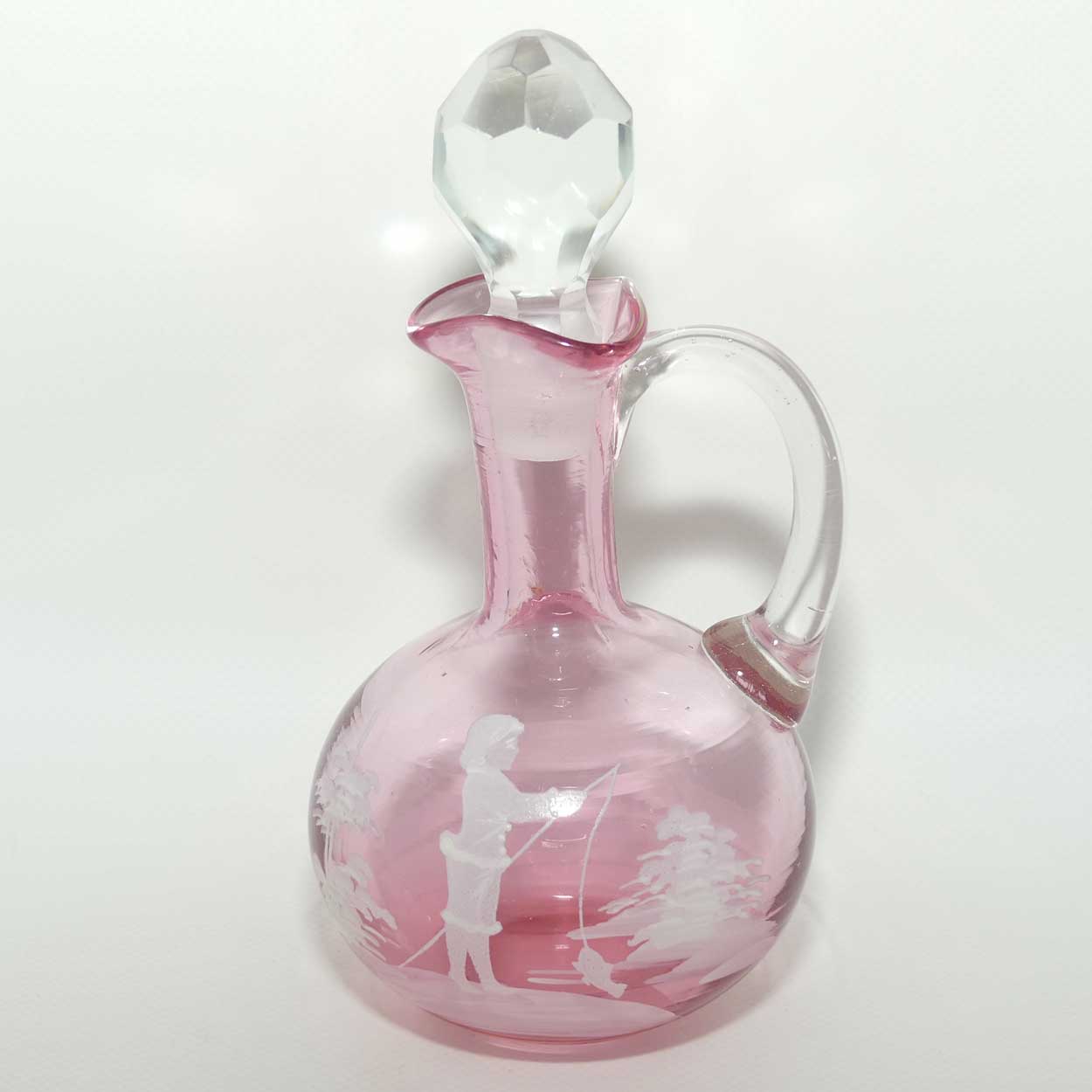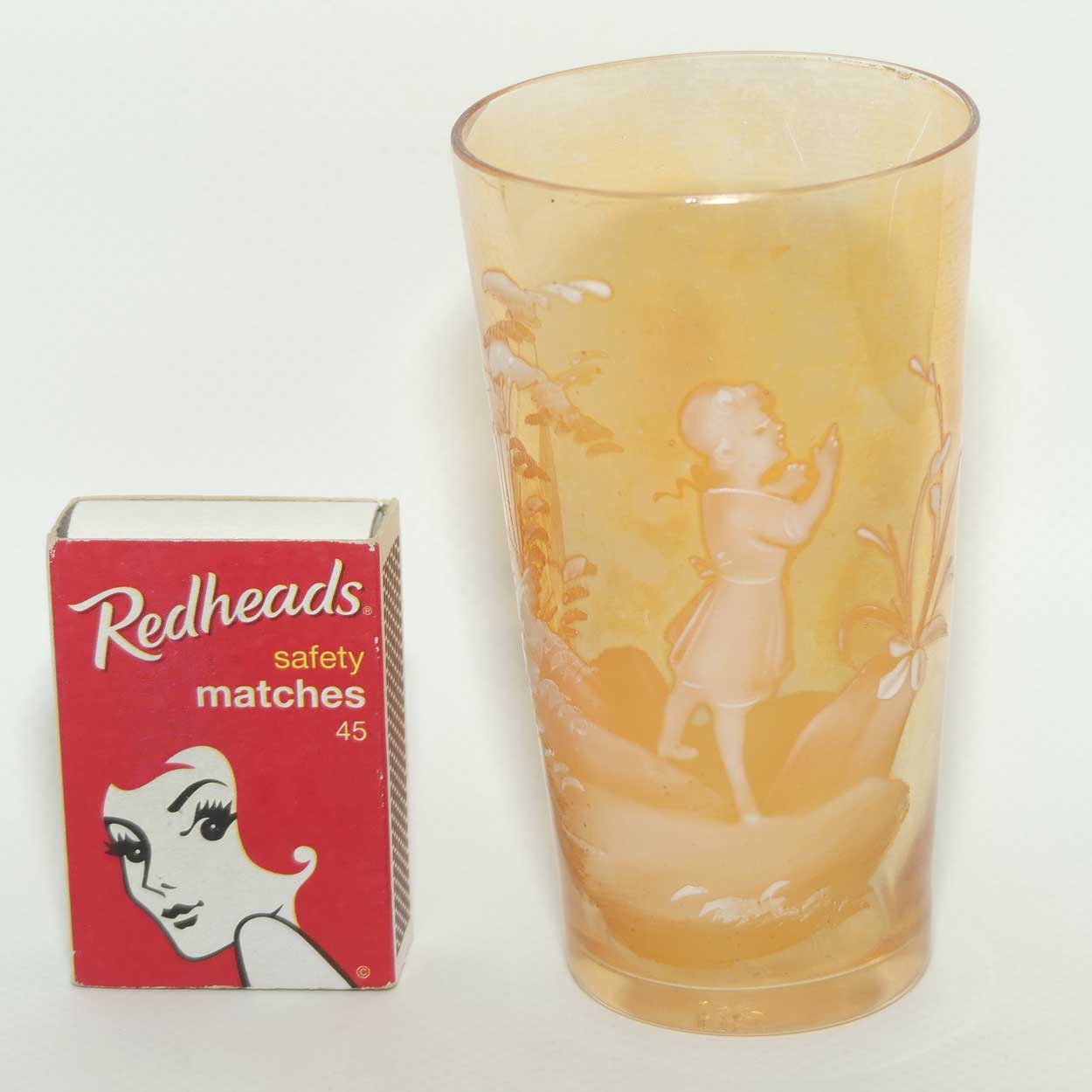The distinguishing feature of Mary Gregory glass is the stylised white enamel painting usually of a child in an outdoor setting, playing with such things as butterfly nets, bubbles, fishing rods, or hoops. The trees and foliage often have a typical "feathered" style, the figure is oddly old-fashioned in its proportions, and the enamel is fired onto the glass.
This kind of decoration developed from the "painted cameo" glass produced in Europe after about 1870 which itself was developed to compete with the very popular carved cameo from England. Some very beautiful classical scenes in white enamel on Victorian glass are sometimes called "Mary Gregory" glass as the alternative "painted cameo" is not a popular name.










